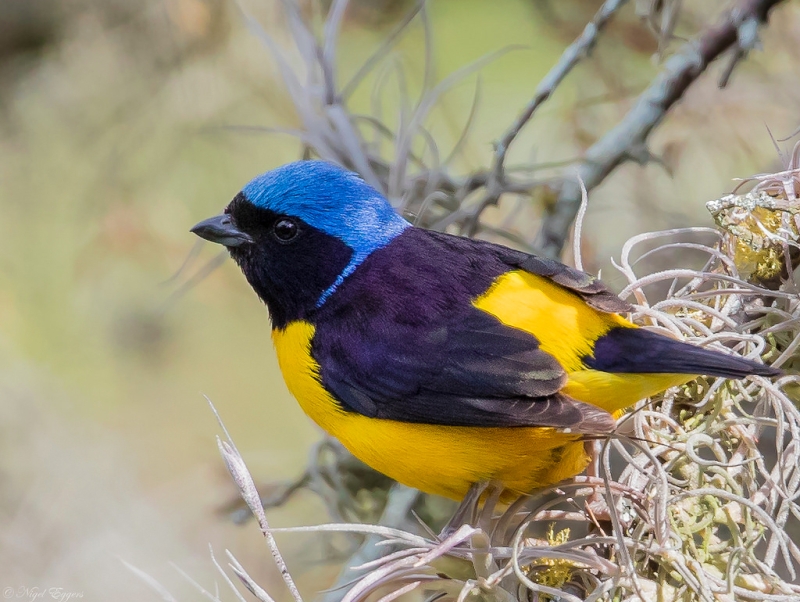
These enchanting birds are found across the main islands of the Lesser Antilles, as well as in Hispaniola (the Dominican Republic and Haiti) and Puerto Rico.

The Antillean euphonia thrives in a variety of habitats, ranging from lowlands to high mountains within its range. It frequents dry to humid forests, and is often observed along forest edges and in disturbed areas with mistletoe.

These birds have a preference for dining on small fruit, with a particular fondness for mistletoe berries. They forage in small flocks, flying from clump to clump, and expertly gather fruit while in flight or by perching.
During the breeding season, which spans from January to July, these birds construct domed-shaped nests using moss and small rootlets. The nest’s entrance is situated on the side, offering excellent camouflage amidst vegetation, especially in epiphytes. The nest is lined with dried grass and pieces of vegetation, within which 3 to 4 white eggs with red to brown markings are laid. Incubation duties are shared by both parents, with the female taking on the majority of the responsibility. The young are nurtured by both parents and typically fledge after 17 to 24 days.

While the overall population is suspected to be stable, localized declines might occur depending on the range and subspecies distribution. The Antillean euphonia’s exquisite beauty and distinctive behaviors make it a cherished avian gem that adds to the rich tapestry of the natural world.








